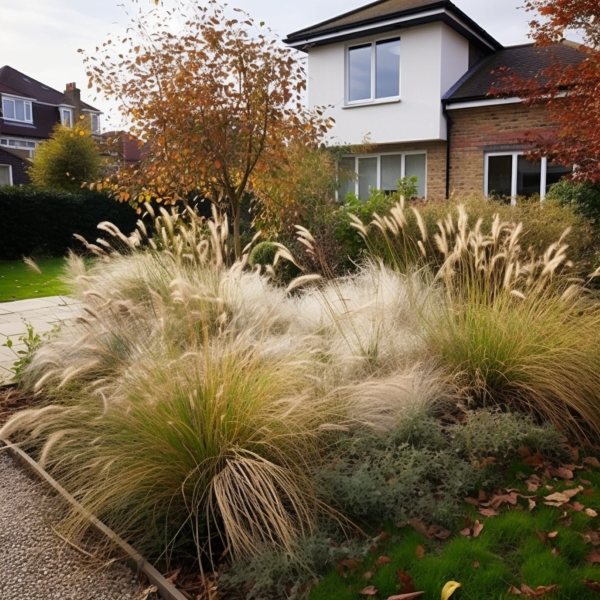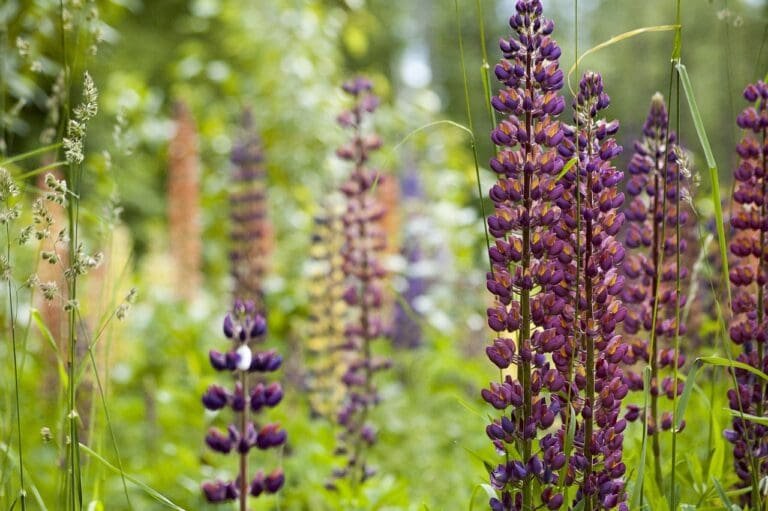Are you feeling a bit ‘blah’ about your grassy front lawn? Do you yearn for something unique that sets your home apart from the rest? Well, it’s time for a shake-up!
Your front garden is more than just a patch of green; it’s the first impression of your home, leaving a lasting impression on guests and passers-by.
While grass has its charm, it’s far from being the only player in the game of curb appeal. Let’s toss out the old rulebook that insists on a conventional lawn. Instead, let’s explore a whole new universe of lush, eco-friendly, and absolutely spectacular alternatives for your no-grass front garden.
Top Tip
When planning your no-grass front garden, consider the style and aesthetic of your home. A seamless transition from home to garden enhances curb appeal and creates a cohesive, harmonious look.
This post contains affiliate links which means we may make commission from any qualifying sales with no extra cost to yourself.
No-Grass Front Gardens Design Ideas
1. Create Lush Flowerbeds
2. Design a Rock Garden
3. Create a Native Plant Oasis
4. Consider a Clover Lawn
5. Use Creative Hardscaping
6. Consider an Evergreen Planting Scheme
7. Create a Container Garden
8. Design a Vertical Garden
9. Create a Zen Garden
10. Consider an Edible Garden
11. Utilise Water Features
Create Lush Flowerbeds
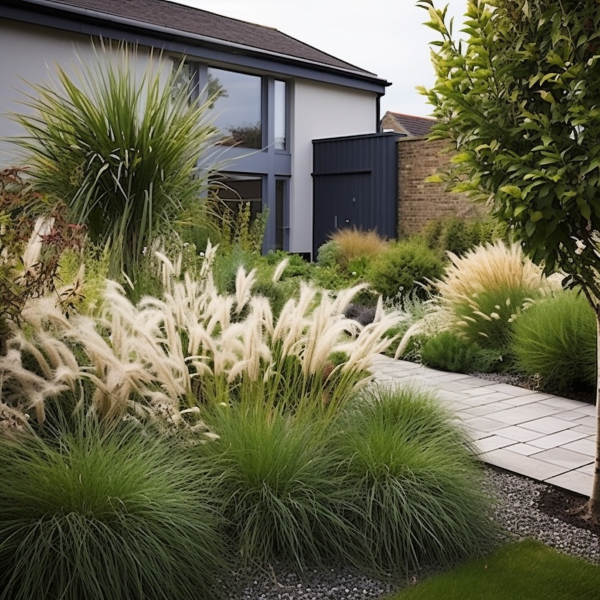
Creating a vibrant, multi-layered flowerbed can be an exciting journey. By choosing a diverse mix of perennials and annuals, you can ensure your garden remains lively throughout the year. Include some ornamental grasses for a natural and inviting style,
Different heights and textures can add depth and visual interest, while a blend of bloom times guarantees an ongoing flower show.
A helpful tip: group plants with similar watering and sunlight needs together to simplify maintenance and keep your plants happy.
Design a Rock Garden
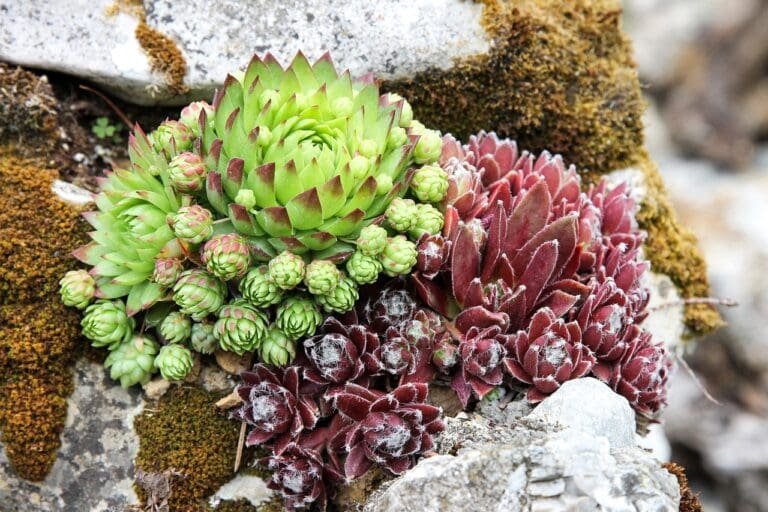
Rock gardens present an opportunity to explore the beauty of simplicity. By integrating rocks and stones of different sizes, shapes, and colours, you can craft a visually fascinating landscape.
This is an excellent low-water solution, especially when combined with low-maintenance succulents and other drought-tolerant plants. Consider adding a few bursts of colour with alpine flowers or bright sedum varieties.
Create a Native Plant Oasis
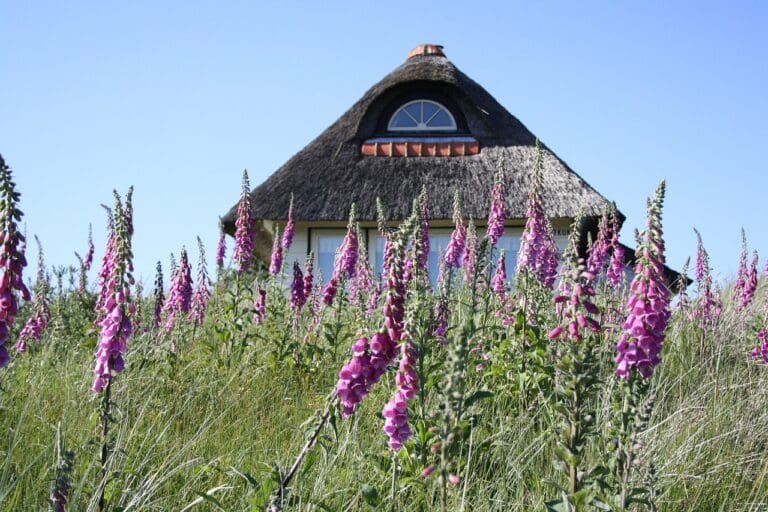
Native plants are perfectly adapted to your local climate, making them a low-maintenance choice. Try to build layers with small native trees, shrubs, and groundcovers for a garden that’s brimming with life.
Another advantage: you’ll be supporting local biodiversity by providing habitat and food for local birds and insects. Look into local gardening clubs or resources to find the best native plants for your area.
Consider a Clover Lawn
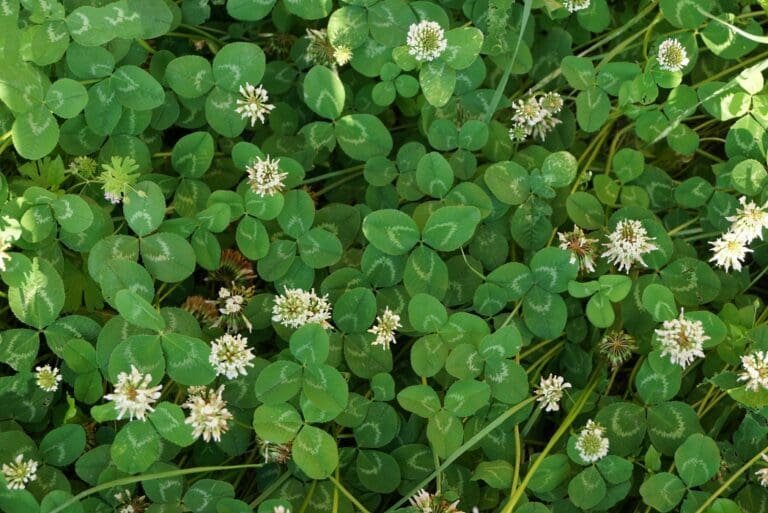
A clover lawn is a hardy, sustainable alternative to a traditional grass lawn. Clover lawns are low maintenance, rarely require fertilizing, and remain lush and green even in the heat of summer.
To establish a clover lawn, first remove any existing grass. Then, sprinkle clover seeds over the area and water regularly until the lawn is established. Plus, clover is a bee favourite, so you’ll be doing your part to support local pollinators!
Use Creative Hardscaping
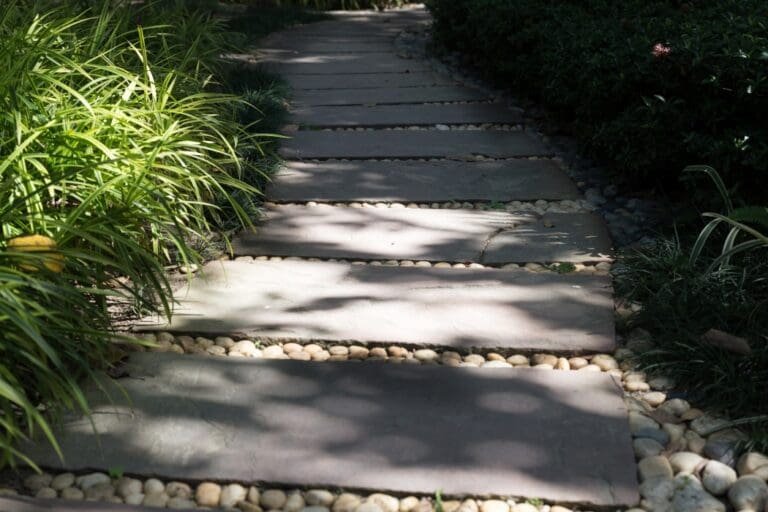
Hardscaping refers to the non-living, hard elements in your garden landscape, and it can be a game-changer in a no-grass front garden. By using materials like flagstone, bricks, or even recycled materials, you can design a space that’s functional and charming.
Imagine a curving path that gently guides visitors to your front door, or a patterned brick patio that serves as a focal point. For a more rustic or naturalistic look, consider using reclaimed wood or natural stone. The choice of material can dramatically affect the overall mood and style of your garden.
When designing your hardscape, keep in mind that it should integrate well with the planting scheme. For instance, low-growing groundcovers, creeping thyme, or moss can be planted in between paving stones to soften the overall look and bring life to your hardscape. Similarly, climbing plants or wall shrubs can be used to disguise walls and bring vertical interest.
Consider an Evergreen Planting Scheme

Evergreens can ensure your garden remains vibrant throughout the year, while also offering privacy. Try to include a range of evergreen plants with different leaf shapes, textures, and shades of green.
You might consider shrubs with variegated leaves or colourful conifers for added interest. Even in winter, your garden will remain a green and pleasant view.
Create a Container Garden
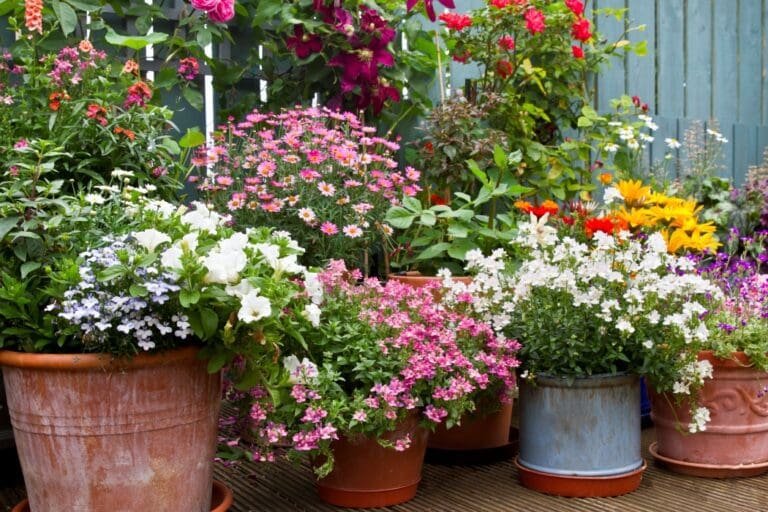
For those with a smaller space or a paved front garden, containers are your best friends. Choose a mix of ornamental grasses, striking flowers, and dwarf trees for variety.
You can use different container sizes and shapes to add an extra layer of intrigue. Remember, though, that containers dry out faster than ground soil, so be sure to water your plants regularly.
Design a Vertical Garden
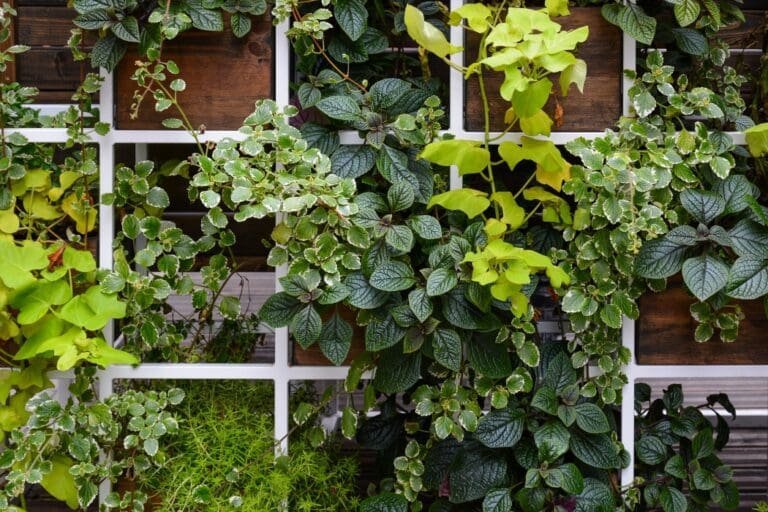
If ground space is limited, take your garden to the skies! Wall-mounted planters, trellises, or hanging baskets can house a variety of plants. Trailing plants like ivy, climbing roses, or clematis can add a vibrant touch to your front garden’s facade.
When choosing plants, remember to consider the light conditions of your wall — some plants prefer full sun, while others need shade.
Create a Zen Garden
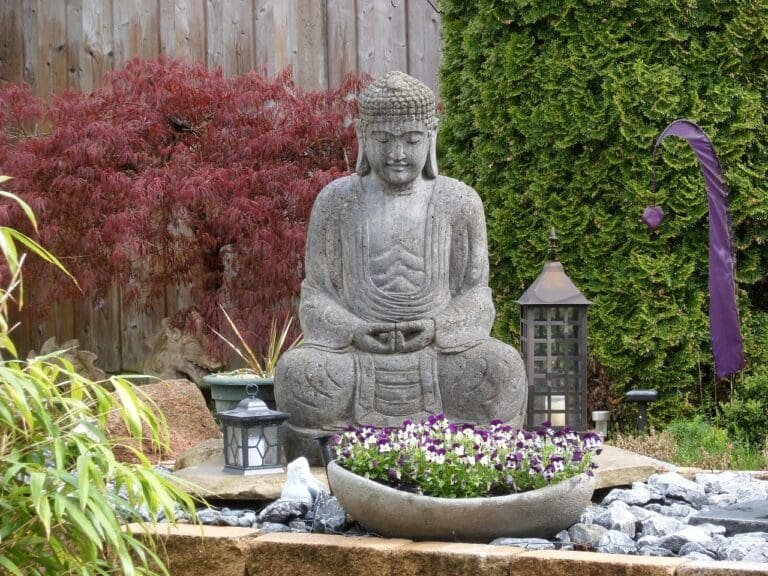
A Zen Garden can turn your front yard into a tranquil oasis. Start with gravel or sand, which you can rake into patterns representing water ripples. Larger rocks can serve as islands or mountains.
For a touch of green, add moss, ferns, or low-maintenance evergreen shrubs. Zen gardens emphasize simplicity and minimalism, so resist the urge to overdecorate.
Consider an Edible Garden
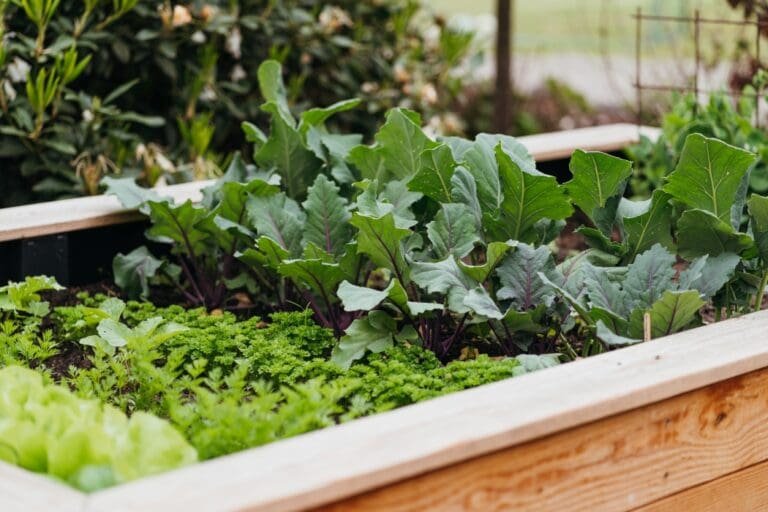
Who said a front garden can’t be both beautiful and delicious? Intersperse herbs and vegetables among ornamental plants or use fruit trees as focal points. Raised beds or containers can add structure while making it easier to care for your edible plants. Remember to add some edible flowers like nasturtiums, pansies, or marigolds for an extra splash of colour.
Utilise Water Features
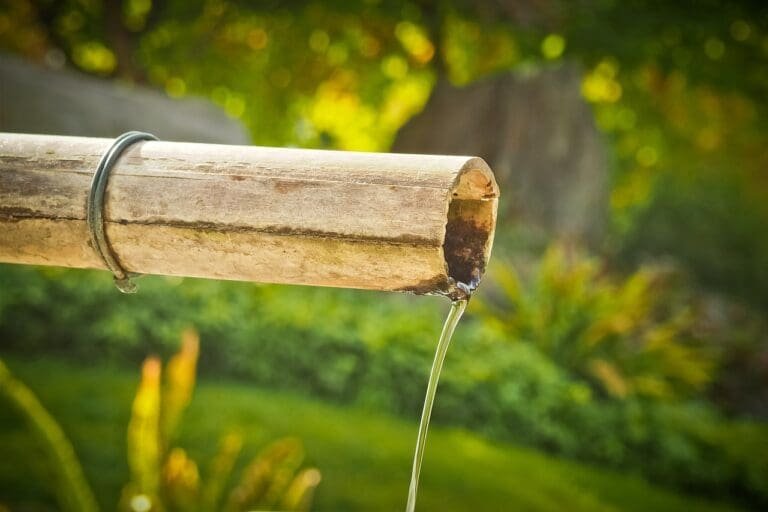
A water feature like a small fountain, pond, or birdbath can be a wonderful centrepiece for your front garden. This can add a dynamic element to your garden and improve local biodiversity by attracting birds and beneficial insects.
Surround your water feature with moisture-loving plants or float water lilies on the surface of your pond. Keep in mind, a water feature will require regular maintenance to keep it clean and safe for wildlife.
Caution: Ponds need to be made safe for children and animals.
Reasons To Choose a No-Grass Front Garden
Water conservation
Grass-free gardens often require less water, making them a great choice for drought-prone areas.
Low maintenance
Without the need for regular mowing, watering, and fertilizing, many grass-free alternatives are less demanding.
Increased biodiversity
Incorporating native plants and diverse landscapes can attract beneficial wildlife, promoting local ecosystems.
Unique aesthetics
Grass-free gardens can be designed to reflect your personal style and create standout curb appeal.
Eco-friendly
Reducing the use of fertilizers and lawn mowers can help decrease your carbon footprint.
Enhanced property value
A well-designed, unique garden can increase your property’s value.
Versatility
With a variety of options from rock to native gardens, you can design a garden that fits your lifestyle and local climate.
Year-round interest
Certain grass-free elements, such as evergreens, hardscapes, or water features, provide visual appeal all year round.
Final thoughts
Embracing a no-grass front garden can reduce the reliance on chemical fertilizers and weekly mowing, making your garden more eco-friendly and low-maintenance.
The myriad of options available for a grass-free garden also allow for a high degree of customisation, enabling you to craft a space that truly reflects your personality and complements your home’s aesthetic.
And let’s not forget the opportunity to nurture local biodiversity by opting for native plants and creating habitats for beneficial wildlife.
Frequently Asked Questions
Q: How can I make my garden look good without grass?
To make your garden look good without grass, focus on variety and structure. Use different types of plants such as perennials, annuals, and shrubs that offer varied heights, textures, and colors. Hardscaping elements like paths, patios, and retaining walls can add structure and visual interest. You could also consider features like water elements, garden sculptures, or a rock garden to make your garden stand out.
Q: How do you build a low maintenance front garden?
A low maintenance front garden can be achieved by using native plants, which are adapted to your local climate and typically require less care. Incorporating hardscaping elements like stone pathways or gravel beds can also reduce the need for upkeep. Additionally, consider using mulch to suppress weeds and retain soil moisture, reducing the time you’ll spend weeding and watering.
Q: How do you make a small front garden look nice?
Small front gardens can be made to look nice by using plants and features that draw the eye upwards, creating a sense of height. Use vertical elements such as trellises, climbing plants, or tall, slender plants. Brightly coloured plants can create a sense of depth, while a small water feature or a piece of garden art can serve as an attractive focal point.
Q: How do I add value to my front garden?
A well-maintained and attractive front garden can add significant value to your property. Create a strong first impression with a clear, inviting path to your front door, complemented by well-chosen plantings. Consider investing in quality hardscaping or a water feature, which are both attractive and enduring. Additionally, gardens that are easy to maintain are often more appealing to potential buyers.
Q: What are easy gardens for the elderly?
Easy gardens for the elderly typically include low-maintenance plants and elements that reduce the need for bending or heavy lifting. Raised beds or container gardens can bring plants up to a more manageable height.
Incorporating paths that are wide, level, and non-slip can make the garden more accessible. Opt for perennials over annuals, as they require less frequent replanting. Consider installing a bench or seating area to provide a comfortable spot to rest and enjoy the garden.

